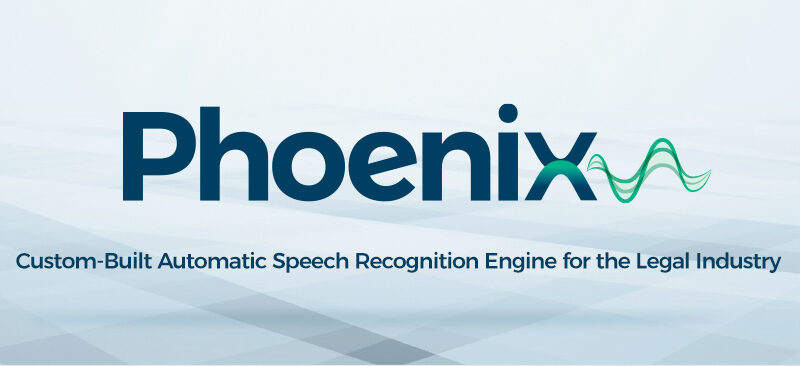
Recently, Stenograph announced Phoenix, our Automatic Speech Recognition (ASR) Engine, custom-built for the court reporting industry. ASR is a technology that will assist all court reporters to produce verbatim transcripts more quickly and efficiently. Phoenix uses Stenograph’s decades of knowledge in legal terminology, formatting, and editing to provide a high-quality rough transcript. It is a powerful tool allowing reporters to become more productive and save time during transcript production.
Litigation and the demand for transcribed pages are growing at about 4% year-over-year. In certain geographic markets, and certain types of depositions, electronic recording is used. This is creating opportunities for agencies to integrate digital reporting into their suite of services. Stenograph is providing a solution for these markets while continuing to invest in stenographic court reporting tools and technologies. We recognize the importance of the verbatim record and our goal is to make sure that those tasked with preserving it are provided the best tools. For stenographers, this is our industry-leading Luminex II writer and CATalyst transcript production software. For voice reporters, it is our CATalyst VP software. For digital reporting, it is MAXScribe, powered by Phoenix ASR.
What does ASR mean for the court reporting industry?
Stenograph isn’t the first in the industry to develop and introduce ASR. We recognize that to make ASR a productivity enhancing tool it must be custom built for the legal market and provide the accuracy, dependability, and performance that Stenograph is known for. Court reporters are the lifeblood of the legal industry, and ASR will make stenographers more productive. ASR will not replace reporters, it is a productivity tool to make reporters more efficient. We know new technology can be scary. Just like the change from paper to electronic, cloud backup, or audio sync, Phoenix ASR is the latest in a long line of Stenograph technologies for reporters. Those advancements didn’t make reporters any less important, and neither will ASR.
How will Stenograph use ASR?
Stenograph’s mission is to create products that empower the high-quality capture, production, preservation, and accessibility of verbatim records. Our most recent technologies and products will do just that.
We are excited about our upcoming product CATalyst Proof It. CATalyst Proof It will use the Phoenix ASR engine to build a version of a transcript in the background while the steno transcript is produced by the stenographer. The steno-produced transcript will be compared to the ASR transcript and areas where the text does not match will be highlighted, greatly decreasing the editing time. This could improve your productivity by up to 30%, giving you back more time.
Stenograph is also using Phoenix ASR in MAXScribe. MAXScribe brings our decades of knowledge of legal terminology, formatting, and editing to create a solution purpose-built for the legal industry.
By creating a product for digital reporters, does that mean you are not supporting stenographers?
We believe that there is enough demand in the market for everyone. Creating a product for digital reporters does not mean that we do not support stenographers. The market for legal matters and transcribed pages is growing, and our parent, The Heico Companies, regognize the market potential for Stenograph. For that reason, they invested in us to develop Phoenix to allow us to grow into multiple segments of the court reporting industry. At the same time we have been investing the profits from our core Steno products back into the development of steno products. We have recently doubled the number of engineers working on steno products, namely future writer development and enhancements, and new versions of CATalyst and CaseViewNet. We continue to have dedicated stenographic sales, manufacturing, engineering, and technical support teams. Stenograph recognizes the best way for the steno market to succeed is to increase the inflow of steno reporters into the market. Each year we donate to organizations like Project Steno and NCRA’s A to Z Program, as well as directly providing scholarships to high potential students. Stenograph has been supporting the stenographic court reporting industry for 80 years, and we plan on being around for the next 80+ years. You can read more about our ongoing commitment to the stenographic court reporting industry here.
Each day, Stenograph employees work on products and services that are designed to help improve the efficiency and productivity of court reporters. We come to work with the customer in mind and we will continue to use our knowledge and resources to provide our customers the very best products and services, utilizing the latest technologies available.

